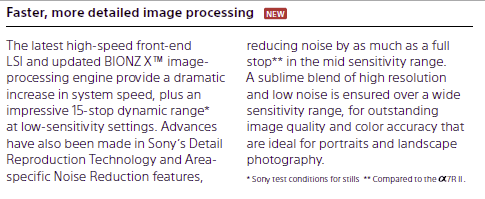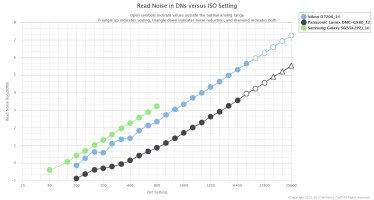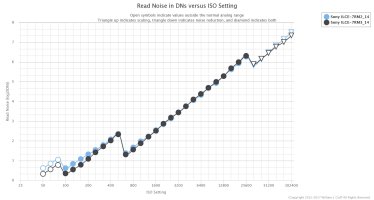privatebydesign said:
bclaff said:
There is no assumption that 14-bit ADC limits dynamic range to 14.
Then I don't understand why your explanation page runs to 14 and your figures are 14 minus the amount lost to < SNR 20.
"Here is a chart of the Photon Transfer Curve for the Nikon D300 in ADUs at all whole ISOs based on 14-bit ADUs: "
http://www.photonstophotos.net/GeneralTopics/Sensors_&_Raw/Sensor_Analysis_Primer/Engineering_and_Photographic_Dynamic_Range.htm
I understand 14 bit ADU's can represent any range of values with 16,384 steps, and that an ADC doesn't count 1:1 photons to these steps, what I don't understand is where the 14 stops of DR as a base comes from.
So, for example, a full well capacity for a pixel is 100,000 photons. The 14 bit ADC can change that 0-100,000 photons of electric charge into any one of 16,384 values, or ADU's, giving a 14 bit ADU. I understand that if it took 20 stops of DR to capture a full range of photons across the sensor then the 16,000 steps would represent 20 stops of DR, but that doesn't seem to be how it works and again I don't understand where your 14 stop start point comes from.
Would be grateful of an explanation from somebody who actually understands!

This comes up enough that a separate article on PhotonsToPhotos is called for.
First note that the chart you make reference to has a logarithmic x-axis.
It's true it ends on the right at 14 but it also runs to minus infinity on the left even though that particular one ends at 0.
Remember, read noise is a standard deviation; so although each ADC reading is integral the standard deviation is not, and can be less than 1.
Because of quantization error in practice we can't measure below about 0.6 DN
( see http://www.photonstophotos.net/GeneralTopics/Sensors_&_Raw/Quantization_Error_in_Practice.htm )
0.6 is nearly 0.75 stops better than you might expect but to be conservative I typically say that an n-bit ADC can measure n+0.5 stops of dynamic range; 14.5 stops for a 14-bit.
I rarely test a sensor with 14-bit ADC with more than 14 stops of EDR; the Nikon D7200 is an example.
This happens more often with 12-bit ADCs; I assume these cameras don't use 14-bit due to cost considerations.
A 12-bit example is the Panasonic GX80.
Even the 10-bit ADC in the Samsung S6 phone isn't enough at ISO 50.
Attaching (note logarithmic y-axis, below 0 is below 1DN ):



